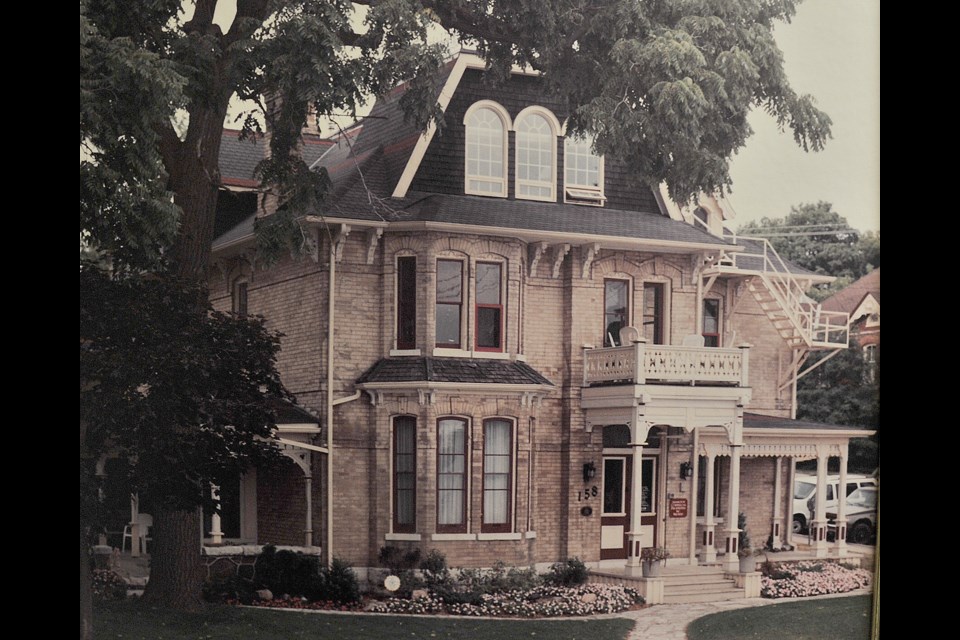For more than 150 years, people have been checking in to an east-end Barrie home, whether it was for their physical or financial well-being.
And now residents might want to check it out during a quick drive-by.
Since approximately 1876, doctors, and other advisors of different sorts, have occupied the premises at 158 Dunlop St. E. and it is arguably one of the most striking century homes in the city ... and hard to miss.
Located at at the northwest corner of Dunlop and Poyntz streets, it has a wonderful view over Kempenfelt Bay and harkens back to an era reflecting Barrie’s history.
According to the city’s Heritage Barrie department, Dr. Edward D. Morton bought the property in 1865 and 10 years later had the ‘Pass’ family house demolished to make way for a ‘bright, buff brick residence.'
“This is a stately and elegant residence that blends Gothic Revival with Italianate style elements, and features a traditional side verandah overlooking a garden setting,” says Tomasz Wierzba, a City of Barrie planner who is also a Heritage Advisory Committee liaison under the Ontario Heritage Act. “The property is designated under the Ontario Heritage Act for its architectural and historical significance.”
This writer is not sure about the word ‘buff’, but Darick Battaglia — a former owner of the beautiful two-and-a-half-storey structure — is keen on the yellow brick that covers the home.
The owner of Yellow Brick Mortgage Group (in conjunction with Dominion Lending Centres), owned — and lived — in the century-plus home more than 20 years ago.
He has since moved his offices to another locale in Barrie, but has fond memories of the structure where he and his young family lived for a while.
“The brick is very unique. I don’t know of any other yellow brick homes in Barrie,” says Battaglia, who owned the building between the mid 1990s and 2000s. “The brick was carted here from the Kitchener-Waterloo area where you’ll see a lot of yellow brick homes. It had to do with the origin of the stone itself. I guess it was more common with the stone from that area than it is here.
“It would have been a special item. It would have taken a lot of effort to bring that much brick to Barrie. This building in particular has a beauty about it, and architectural features, that are uncommon and would have gone above and beyond the norm in its time,” he says.
A huge black walnut tree, perhaps planted in the days when the house was first constructed, overhangs the home and drops a few surprises of its own, he says laughing: “Walnuts the size of your fist.”
“The old coach house — where the horses and coaches were stored — still exists around the back and has since been turned into a one-bedroom apartment,” he says. “If you were to enter into that apartment, you would see the old, wood tongue and groove lining on the interior walls and the ceiling and you could actually see whip marks on the walls as well.”
In the day, Barrie was home to many striking homes and 158 Dunlop East was one of many, with its 10-foot high ceilings, foot-tall baseboards, verandas and more.
Some local historians refer to the home as the Turnbull House, a place of doctors and healing.
According to the Su Murdoch, who compiled a report for the City of Barrie’s municipal heritage registry more than 20 years ago, Ernest G. Turnbull, MD, bought the lot in March 1934 for $6,750.
Many years prior to that, the home was built by physician and surgeon, Edward Deane Morton, MD, who arrived in Barrie in January 1862 and took up the practice of Dr. Archibald Pass who had died the previous year.
“It was beautiful and the flooring had beautiful coloured patterns,” Battaglia adds. “This building in particular has a beauty about it and architectural features about it that are uncommon and would have gone above and beyond the norm in its time.
"It was definitely built to impress."



